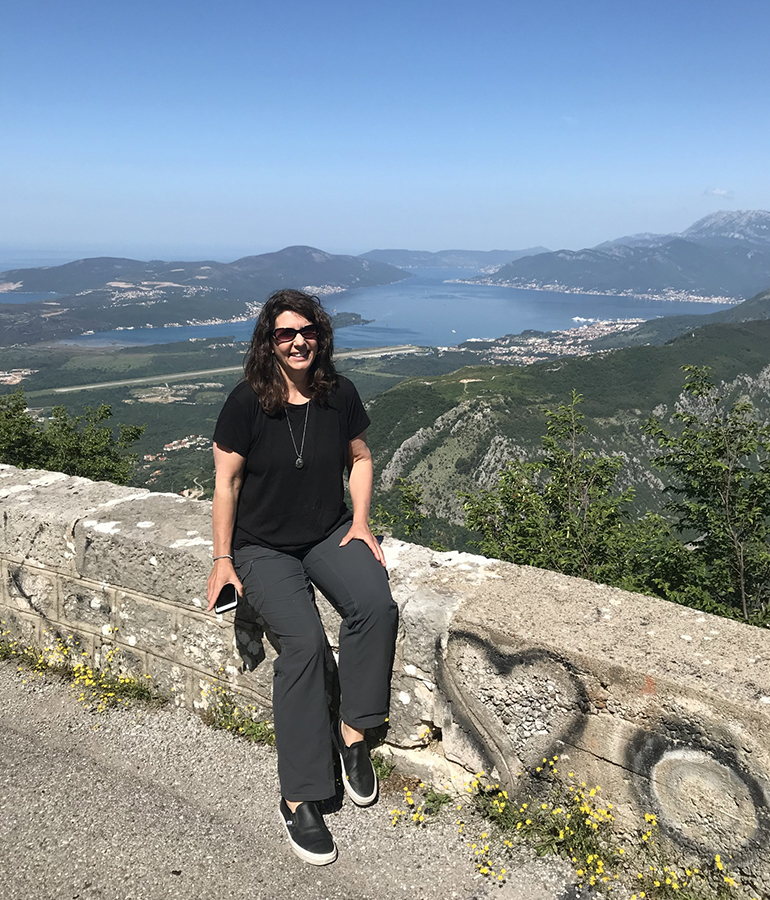Staying Fit


It was supposed to be easy to find my father in-law’s ancestral hometown in the Czech Republic. We had a letter written by him in Czech, his first language, detailing our mission.
“Sir, my name is David Bartusek,” began the 1995 letter, introducing my husband as a Minnesota-born American. “My great-grandfather hailed from Vyšné, Czechoslovakia. They tell me it is about 10 kilometers south of Veselí. I would like to take a look there.” It goes on to name the community, Hamr, where the family attended church, and offers $25 to anyone who can give us a ride there. “Could you help me?” it ended.
When we presented this letter at our hotel in České Budějovice, the capital of South Bohemia, the clerk looked confused and gestured that she couldn’t read it, but not because the handwriting was illegible (his cursive was textbook). In the four generations since the family left the motherland, the language had evolved. We could only liken it to us trying to read Old English. We feared our mission had come to an early finish, though in our hearts we knew that no family story truly dead ends.
I have learned that family isn’t necessarily the destination on such searches for ancestry. Rather, I see them as the conduit to a broader view of history. In my work as a journalist, I have interviewed Americans who connected with long-lost family members in places like Ireland and Romania. I’ve also interviewed genealogists who specialize in making those connections possible. My own efforts, admittedly without professional assistance, have been less fruitful but no less illuminating in understanding the circumstances that forced emigration.
Unfortunately, when ties are cut they are often irretrievable. Author Alex Haley inspired the genealogy craze of the 1970s and ’80s with Roots, which traces his family through slavery in America back to freedom in Gambia. This irreversible severance occurs in other cultures, too, through poverty, warfare, natural disasters and, most inescapably, the steady erosion of memory over time. I have come to think more holistically about “my family” as a unique story, worthy of tracing, faint though it is, and to consider ancestry travel as opening a window to the timeline of human history.
Four years ago, my husband, son and I went to Montenegro, my grandfather’s homeland, to explore my paternal family roots. Slightly smaller than the state of Connecticut, Montenegro has transformed in recent years into a popular Adriatic cruise port at Kotor, where medieval walls scale the mountain, encircling mazelike stone streets, Romanesque churches and palazzi often built during the 400-year Venetian reign. The Chinese are building a highway linking the capital, Podgorica, to the ski region in the Dinaric Alps, but most of the development taking place in the country is reserved for its beachy fringes, where European holidaymakers can have the Italian Riviera experience at a bargain rate.


Of course, there was none of that in 1910 when 16-year-old Mitar Glusac, my grandfather, then a shepherd who was ridiculed as “too big” for trying to attend primary school in his teens, walked out of the stony pastures of inland Grahovo (today, about an hour’s drive from Kotor) and eventually onto a ship in Bremerhaven, Germany, bound for Galveston, Texas. He worked on wharves there, in coal mines in Youngstown, Ohio, and eventually settled in Detroit in 1929, where he stoked the blast furnaces for the original Ford auto plant for more than 30 years. He never spoke much English, and when asked if he would like to visit Montenegro, he always replied, “Nema niceg osim kamena,” or “There is nothing there but rock.”
It wasn’t hard to see Grahovo through his lens. A ribbon of lightly traveled road threaded pine forests and rolling wheat fields, a place so haunting and untouched that I couldn’t help imagining the luxury bicycle touring companies that will discover it. But that hasn’t happened yet. In deserted Grahovo, foam spilled out of split cushions at the lone outdoor café and a stray dog slept in the middle of the street, apparently aware no traffic would interfere with his rest.



































































You Might Also Like
In This Life’s a Journey Essay, a Lighter Agenda in Paris Proved Best
Trip opened traveler’s eyes to another side of the city many never see
Adult child suggests adventure — Mom goes along for the ride
Seeing your kids as adults means sometimes stepping back and letting them lead the way
More Members Only Access
Watch documentaries and tutorials, take quizzes, read interviews and much more exclusively for members